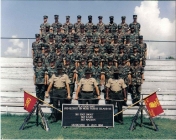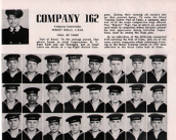Specialty Summary. Provides command, control, communications, intelligence, surveillance and reconnaissance (C3ISR) to assist, control and enable the application of manned and unmanned, lethal and non-lethal airpower in all geographic and environmental conditions across the full spectrum of military operations. Includes terminal control (air traffic control [ATC]) and targeting, and control of air strikes (including close air support [CAS]) and use of visual and electronic aids to control airheads and enable precision navigation. Provides long-range voice and data command and control and communications. Performs tactical level surveillance and reconnaissance functions, fusing organic and remote controlled technologies and manned platforms to build the common operating picture (COP). Related DoD Occupational Subgroup: 125000.
Duties and Responsibilities: Plans, coordinates, and conducts reconnaissance and surveillance of potential assault zones, targets and areas of interest. Operates advanced technologies, including ground based sensors and unmanned aerial systems (UAS) to support reconnaissance and target identification. Surveys runways, assault zones (drop, landing, forward area refueling points [FARP]) and other areas critical to aviation and records data for inclusion in mission plans. Reports current battlefield information.
Plans, organizes, supervises, and establishes ATC in the target area. Initiates, coordinates, and issues ATC clearances, holding instructions, and advisories to maintain aircraft separation and promote safe, orderly, and expeditious flow of traffic under visual and conventional approach control flight rules. Operates and monitors portable and mobile communications equipment and terminal and tactical navigational aids required to control and support air traffic in forward areas. Evaluates and relays status of airfields and assault zones to inbound aircraft and higher headquarters. Provides limited weather observations, including surface and altitude wind data, temperature, and cloud heights. Prepares and issues advisories to pilots, ATC and other agencies concerning weather, notice-to-airmen information, air traffic flow control measures, and wake turbulence. Provides flight assistance and emergency service to air traffic. Records weather and ATC data. Controls vehicular traffic on the airport movement area.
Identifies, assesses, and marks assault zones with visual and electronic navigational aids for day and night air-land and airdrop operations. Coordinates clearances, instructions, advisories, and air traffic movement with forward and rear area commanders. Uses ground-to-air communications equipment in conjunction with visual and electronic systems to control and expedite the movement of en route, arriving, and departing air traffic. Directs actions to handle aircraft emergencies or mishaps. Coordinates casualty and patient evacuation between aviation and medical personnel. Provides airlift operations support that cannot be provided by combat communications groups or other agencies. Operates global positioning systems (GPS) equipment for targeting, navigation, and for the location, assessment and establishment of assault zones. Coordinates airfield ground support (crash/fire/rescue, sweep).
Targets and controls fires. Plans, coordinates, and conducts fires to accomplish supported commander objectives. Includes CAS and supporting arms for surface elements and C3ISR in support of combined forces air component commander (CFACC) assets. Employs visual and electronic navigation and marking equipment to direct aviation assets to target. Issues weapons release clearance.
Deploys into semi- and non-permissive forward areas and forward operating locations by land (mounted, special purpose vehicle or dismounted), sea (surface or subsurface naval vessel, small watercraft, self contained underwater breathing apparatus [SCUBA], or surface swim) or air (parachute, airmobile, air-land) to participate in the full spectrum of military operations to include air expeditionary force (AEF), force projection, direct action (DA), counterterrorism (CT), counter-proliferation (CP), foreign internal defense (FID), humanitarian assistance (HA), special reconnaissance (SR), personnel recovery (PR), noncombatant evacuation operations (NEO), integrated survey program (ISP), counter narcotic (CN), operational preparation of the environment (OPE), advanced force operations (AFO) and fire support operations. Uses demolitions to remove obstacles affecting safe air traffic flow in the target area. Maintains qualification on primary assigned weapons.
Specialty Qualifications:
Knowledge. Knowledge is mandatory of: ATC, reconnaissance and air power control principles and procedures; aircraft flight characteristics; encompassing tactical airlift and weapons delivery; air and surface firepower systems and effects; International Civil Aviation Organization (ICAO), Federal Aviation Administration (FAA), and military air regulations; map, aeronautical chart, and publication use; characteristics and use of tactical and ATC communications systems and equipment, air navigation aids, night vision equipment; GPS and other operational equipment; meteorology principles; deployment procedures; joint service operation; infiltration techniques; movement and route selection; alternate insertion and extraction (AIE) methods; parachute procedures and equipment; jump master training; small unit tactics; amphibious and SCUBA operations; small arms and crew served weaponry; and destructive demolition applications.
Education. For entry into this specialty, completion of high school is desirable.
Training. Completion of the following courses is mandatory for award of AFSC 1C231: Combat Control Preparatory Course.
Combat Control Operator (ATC). Combat Survival. Airborne (Static-line Parachutist). Combat Control School. Completion of the following courses is mandatory for award of AFSC 1C251: Military Freefall Parachutist (Parachutist). Combat Diver Qualification Course.
Experience. The following experience is mandatory for award of the AFSC indicated:
1C251. Qualification in and possession of AFSC 1C231. Also, experience in reconnaissance, terminal control, and combat enabling tasks.
1C271. Qualification in and possession of AFSC 1C251. Also, experience performing or supervising duties involving reconnaissance, and terminal control and enabling tasks.
1C291. Qualification in and possession of AFSC 1C271. Also, experience managing operations involving reconnaissance, and terminal control and combat control enabling tasks.
Other. Attain or exceed the minimum standards specified by the applicable Combat Control Team (CCT) physical ability and stamina test (PAST) IAW AFI 36-2626, Airman Retraining Program, Attachment 11. For entry, award, and retention of AFSCs 1C211/31/51/71, physical qualification for air traffic controller duty, marine diving duty, and parachute duty IAW AFI 48-123, Medical Examinations and Standards. For entry, award, and retention of AFSCs 1C211/31/51/71/91/00 qualification to bear firearms according to AFIs 31‑207, Arming and Use of Force By Air Force Personnel; 36-2226, Combat Arms Training and Maintenance (CATM); and AFSOCI 36-2204, Special Tactics Operator Training. For award and retention of AFSCs 1C231/51/71/91/00: Physical qualification and maintenance of personal physical standards as defined in AFI 13-219, Special Tactics Standards and Evaluation, and AFSOCI 36-2204, Special Tactics Training. Specialty requires routine access to Secret material or similar environment. For award and retention of AFSCs 1C2XX, completion of a current National Agency Check, Local Agency Checks and Credit (NACLC) according to AFI 31‑501, Personnel Security Program Management. NOTE: Award of the 3-skill level without a completed NACLC is authorized provided an interim Secret security clearance has been granted according to AFI 31-501. Qualification as a static-line parachutist. For award and retention of AFSCs 1C251/71/91/00: Qualification as a military freefall parachutist. Qualification as a combat diver.




